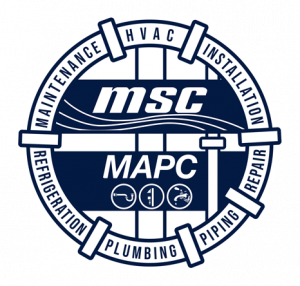Following the completion of a plumbing, sheet metal, or steamfitter apprenticeship, individuals will need to pass a test to become a Journeyworker. Once the apprenticeship is over and as one learns more about the trade and the industry, their skills can lead them to a variety of different job opportunities including Foreman, Estimator, CAD/BIM, Project Manager, Inspector, Superintendent, and Instructor.
With this higher-level of knowledge and responsibility in their respective trade, individuals will be running work and teaching the next generation of apprentices the trade. Journeyworkers are often responsible for more on-the-job projects and tasks on their own and check in with their foreman.
Responsible for supervising jobs by coordinating work assignments for Journeyworkers and apprentices, establishing and sticking to deadlines, ordering materials, and evaluating work performances. A foreman reports directly to the Project Manager and keeps them apprised of job’s progress. It is not uncommon for a foreman to be running multiple jobs or projects at one time.
In the trades, an Estimator will analyze an upcoming project and determine how much time, materials, money, and labor it will need so that the company can properly bid the project and then stay within budget once they win the bid. This role has to take into consideration many variables when creating an estimate such as wasted material, bad weather, material production delays, general contractor delays, and other variables that can increase cost and decrease profits.
Designing and creating drafts of projects that include site plans, floor plans, and 2D/3D models of buildings and structures. Both design positions create plans for projects.
CAD or Computer-Aided Design and this designer will create, or redesign layouts based on the project’s requirements, and also look over design layouts to find and fix compatibility problems.
BIM or Building Information Modeling creates and updates 3D models of buildings and structures.
An architecture degree is not required to work in a CAD/BIM department, but an ability to navigate a computer and design layout is encouraged.
This position is vital to keeping a project on time and on budget. A Project Manager oversees all aspects of the planning, delivery, and implementation of a construction project. They work closely with their foremen to ensure that a project is logistically operating correctly and on schedule, as well as keeping track of spending.
This role can be someone who inspects entire structures to determine safety, soundness, and compliance with specifications, codes, and regulations. It can also be more designated to a specific trade such as plumbing. A plumbing inspector must hold a credential issued by the State and is responsible for conducting plumbing inspections and plumbing reviews in order to administer and enforce state code and legislation.
This position is similar to that of a Project Manager as they both oversee the construction of a project and make sure it adheres to the budget and is done on time. The difference between a Superintendent and a Project Manager is that a Superintendent is on the ground, at the jobsite, supervising the foreman, Journeyworkers, and apprentices. The Project Manager is offsite monitoring the progress from a distance, handles problems, and makes decisions.
Many trades workers find that they want to give back to the industry once they have become a Journeyworker or beyond, and they turn to teaching the next generation of apprentices. Some become full-time instructors for apprentices’ paid related instruction courses and others teach in the evening part-time for the unpaid related instruction courses.








